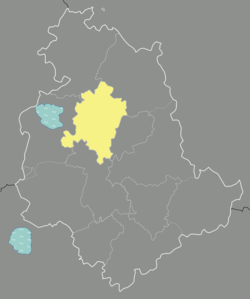The Perugino is a tourist subdivision ofUmbria.
To know
Territories and tourist destinations

Urban centers
How to get
How to get around
What see
What to do
At the table
The Perugian cuisine, like much of the traditional Umbrian cuisine, is based on agricultural products and local breeding and includes various dishes based on game. It is a simple cuisine that tends to enhance the taste of raw materials.
The characteristic bread of the city of Perugia (as in the rest of the region) is similar to Tuscan and Marche bread, or unsalted: the sciapa tradition is traced back to the so-called salt war, in rebellion against the tax imposed by Paul III in 1531 for the use of salt. The typical bruschetta is prepared with whole slices of toasted bread, rubbed with a clove of garlic, a pinch of salt and then seasoned with extra virgin olive oil. Focaccia characteristic of the territory, in Perugia and in the rest of the province, is the Torta al testo. The Easter cake is instead a traditional savory pie with cheese flakes.
Among the first noteworthy are the potato gnocchi with goose sauce, the tagliatelle with meat sauce with chicken giblets and the cappelletti in broth.
As for the second courses, typically Perugian are the stuffed roast pigeon and in carrozza, the pork roast, and the mixed roasts on the grill.
The herb, or various wild wild herbs boiled and sautéed in a pan with oil and garlic, is the most traditional side dish.
The typical sweets are the torcolo di San Costanzo, characteristic for the celebrations of the patron saint (January 29), in the shape of a donut with pine nuts, aniseed, raisins and candied fruit, and the Ciaramicola, a torcolo with pink crumb and white meringue crust, typically Easter cake. Typical biscuit for the period of the Commemoration of the Dead (November 2), are the Fave dei morti and the Stinchetti or Ossi dei morti made with almond paste. Frappe and Strufoli are the typical sweets of the carnival
Torcolo San Costanzo

Blanched bread

Torta al Testo

Ciaramicola
Easter Cake
Death Bean

.jpg/250px-Pincetto_Gardens_in_Perugia,_2009_(2).jpg)






